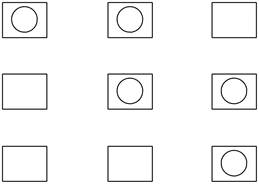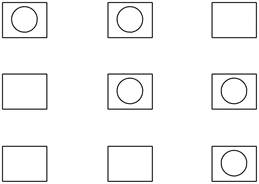
Interpretation:
The possible ways of putting two balls in three boxes, with one ball in each box is to be drawn.
Concept introduction:
Combination formula is the possible way of grouping of distinguishable objects into various subsystems. The equation for combination formula is as follows:
Where,
•
•
•
Answer to Problem 17.1E
The possible ways of putting two balls in three boxes, with one ball in each box is shown below.

Explanation of Solution
Combination formula is the possible way of grouping of distinguishable objects into various subsystems. The equation for combination formula is as follows:
Where,
•
•
It is given that two balls are present in three separate boxes. Therefore, the given value of
Substitute the given values in the above formula.
Thus, the number of possibilities of putting two balls in three boxes, with one ball in each box is
Therefore, the possible ways of putting two balls in three boxes, with one ball in each box is shown below.

Figure 1
The possible ways of putting two balls in three boxes, with one ball in each box is shown in Figure 1.
Want to see more full solutions like this?
Chapter 17 Solutions
EBK PHYSICAL CHEMISTRY
 Physical ChemistryChemistryISBN:9781133958437Author:Ball, David W. (david Warren), BAER, TomasPublisher:Wadsworth Cengage Learning,
Physical ChemistryChemistryISBN:9781133958437Author:Ball, David W. (david Warren), BAER, TomasPublisher:Wadsworth Cengage Learning,
